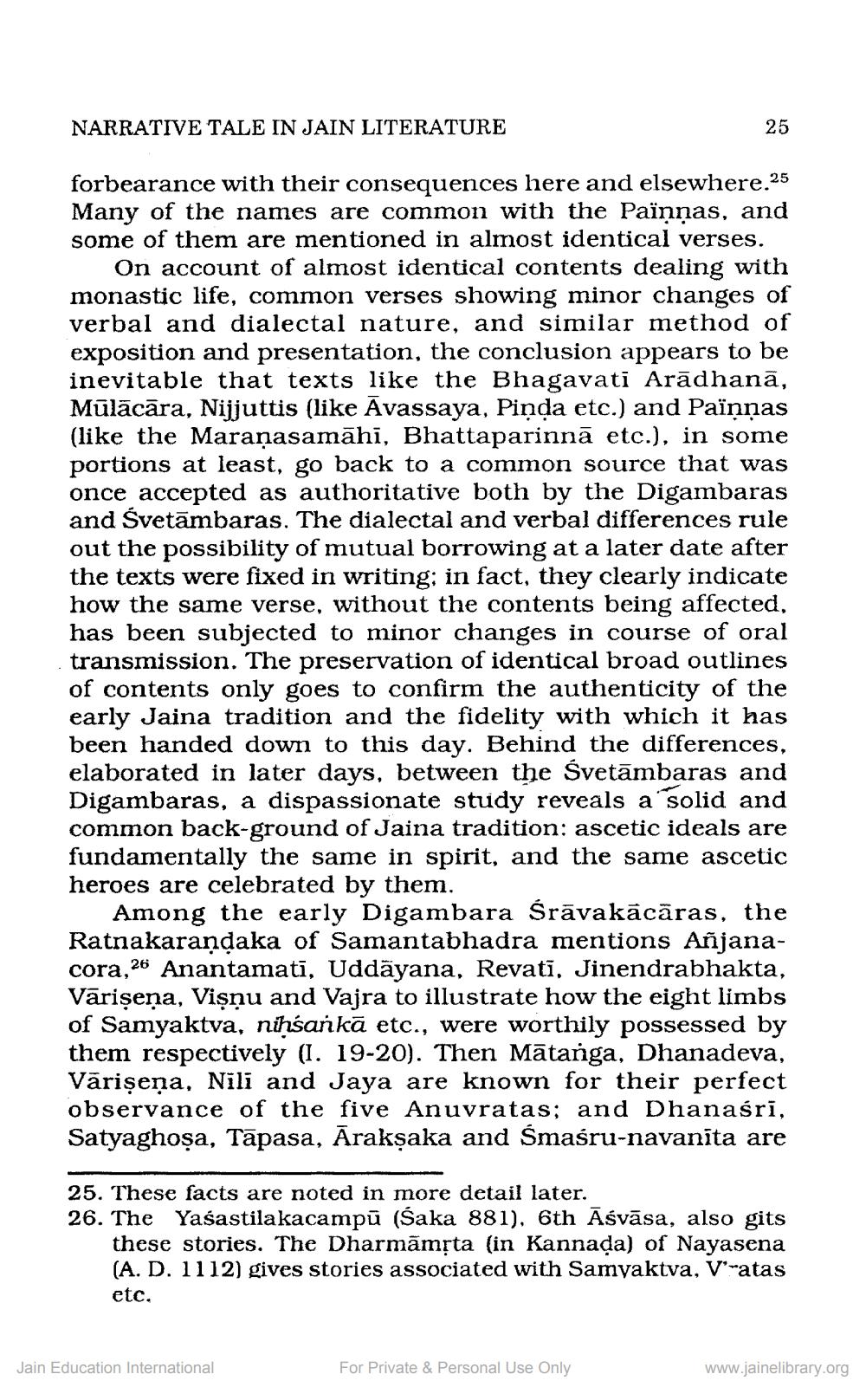________________
NARRATIVE TALE IN JAIN LITERATURE
forbearance with their consequences here and elsewhere.25 Many of the names are common with the Païnnas, and some of them are mentioned in almost identical verses.
25
On account of almost identical contents dealing with monastic life, common verses showing minor changes of verbal and dialectal nature, and similar method of exposition and presentation, the conclusion appears to be inevitable that texts like the Bhagavati Arādhanā, Mūlācāra, Nijjuttis (like Avassaya, Pinda etc.) and Païņņas (like the Maraṇasamāhī, Bhattaparinnā etc.), in some portions at least, go back to a common source that was once accepted as authoritative both by the Digambaras and Svetāmbaras. The dialectal and verbal differences rule out the possibility of mutual borrowing at a later date after the texts were fixed in writing; in fact, they clearly indicate how the same verse, without the contents being affected, has been subjected to minor changes in course of oral transmission. The preservation of identical broad outlines of contents only goes to confirm the authenticity of the early Jaina tradition and the fidelity with which it has been handed down to this day. Behind the differences, elaborated in later days, between the Svetaāmbaras and Digambaras, a dispassionate study reveals a solid and common back-ground of Jaina tradition: ascetic ideals are fundamentally the same in spirit, and the same ascetic heroes are celebrated by them.
Among the early Digambara Śrāvakācāras, the Ratnakaraṇḍaka of Samantabhadra mentions Añjanacora, 26 Anantamati, Uddayana, Revati, Jinendrabhakta, Vāriṣena, Viṣṇu and Vajra to illustrate how the eight limbs of Samyaktva, niḥsankā etc., were worthily possessed by them respectively (I. 19-20). Then Matanga, Dhanadeva, Vāriṣeņa, Nili and Jaya are known for their perfect observance of the five Anuvratas; and Dhanaśrī, Satyaghoṣa, Tāpasa, Ārakṣaka and Śmaśru-navanīta are
25. These facts are noted in more detail later.
26. The Yasastilakacampū (Saka 881), 6th Aśvāsa, also gits these stories. The Dharmāmṛta (in Kannaḍa) of Nayasena (A. D. 1112) gives stories associated with Samyaktva, Vratas etc.
Jain Education International
For Private & Personal Use Only
www.jainelibrary.org




